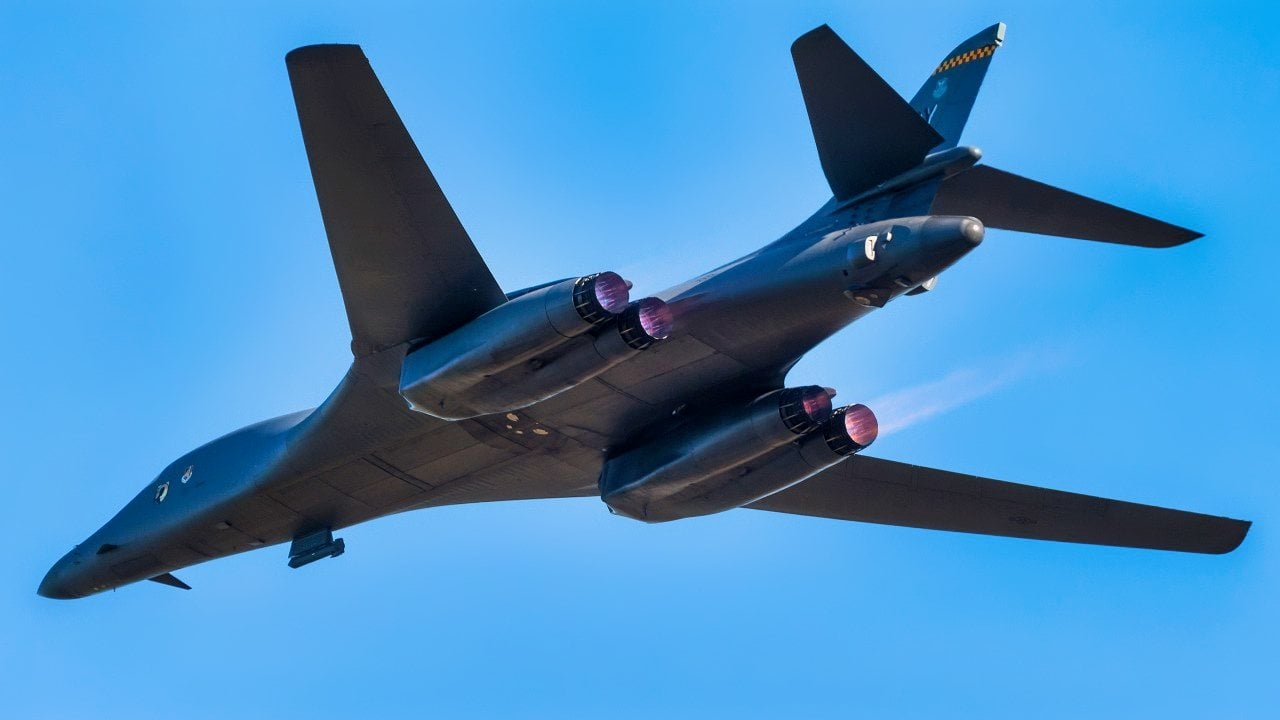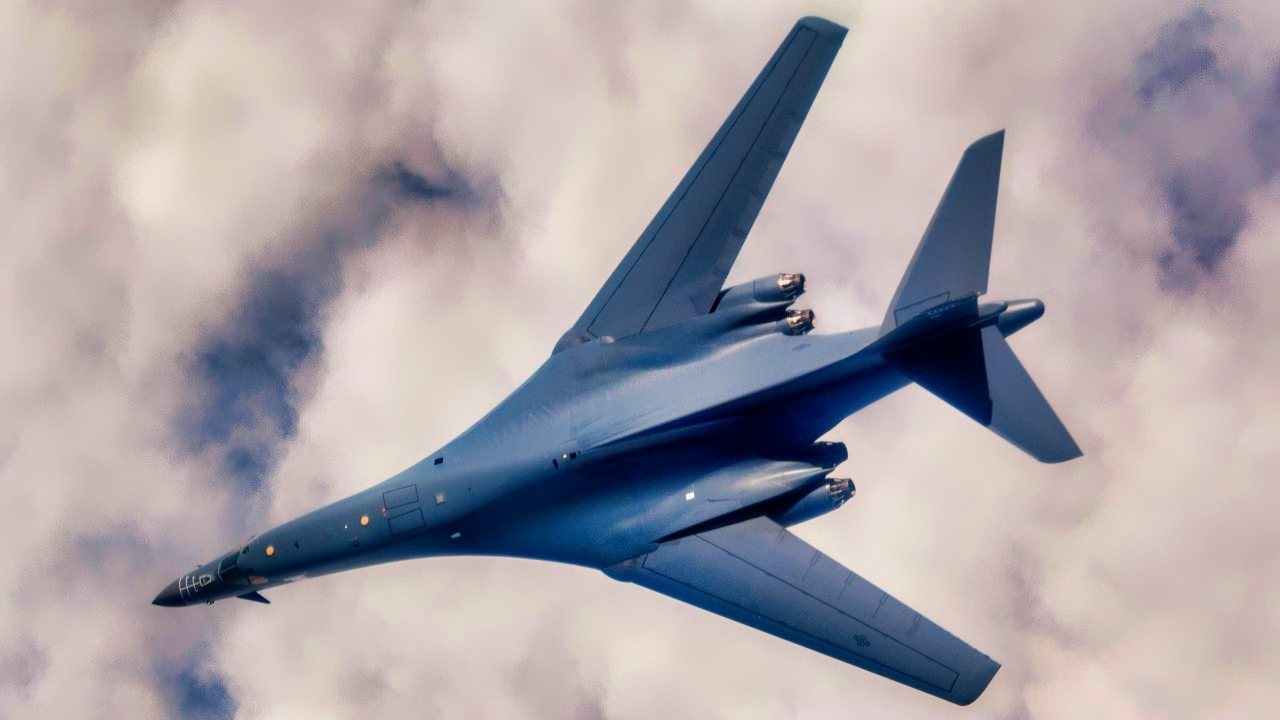Father Time Is Coming for the Air Force's B-1B Lancer Bomber
What You Need to Know: The B-1B Lancer, despite its age, remains a critical asset in the U.S. Air Force due to its unmatched capability to carry the largest conventional payload of guided and unguided weapons. Recently, a B-1B at Dyess Air Force Base received significant upgrades, including Link 16 tactical data communications, a modernized Identification Friend or Foe system, enhanced defensive avionics, and new communication systems to keep it relevant in modern warfare.

-Originally designed during the Cold War for nuclear deterrence, the Lancer has proven its versatility in conventional and tactical bombing missions. However, despite these upgrades, it is slated to be eventually replaced by the forthcoming B-21 Raider stealth bomber.
B-1B Lancer: Upgrades Keep This Legendary Bomber Flying High
Late last year, a new B-1B Lancer featuring an array of technological upgrades was launched at the 7th Bomb Wing at Dyess Air Force Base. The enhanced Lancer received a Link 16 tactical data communications capability, a modernized Identification Friend or Foe system, a defensive avionics system, and a new communications system to help the platform remain relevant.
The Air Force may have newer bombers, but the B-1B can carry the largest conventional payload of guided and unguided weapons of any platform in the service’s inventory.
For this reason, the B-1B Lancer still plays a critical role in the Air Force’s bomber fleet. This is also a major reason why the retirement of these bombers is such a problem for the U.S. Air Force—some say it's a real nightmare of sorts.
A Brief Overview of the B-1B Lancer
Washington wanted a new bomber at the end of the Second World War. The Air Force required that the new platform be able to at least match the payload of the Boeing B-52 Stratofortress and the speed of the Convair B-58 Hustler. After a U-2 spy plane was downed over the Soviet Union by an advanced anti-aircraft surface-to-air missile, the service also decided the future bomber must be able to fly at low altitudes while avoiding detection.
Richard Nixon reinstated the Advanced Manned Strategic Aircraft program when he took office as president. This was renamed the B-1A program. North American Rockwell was selected to construct the new bomber.

Like its predecessors, the General Dynamics F-111 Aardvark and the North American XB-70, the new prototype featured large variable sweep wings to provide greater lift during take-off and landing.
The new bomber’s unique capabilities were not enough. By the time the B-1 was ready for production, the U.S. better understood the Soviets’ ability to detect low-level penetration aircraft with look-down/shoot-down radar. The program was canceled outright around this time and was not revived until President Ronald Reagan took office.
The newer B-1B prototype was less expensive than the originally proposed B-1A, and also slower. As detailed by Flying Mag, it had “an additional structure to increase payload by 74,000 pounds, an improved radar and reduction of the radar cross-section by an order of magnitude. The changes led to a reduction in maximum speed to Mach 1.2.”

During the remainder of the Cold War, the Lancer functioned primarily as a nuclear deterrence bomber for the Air Force. Following the collapse of the Soviet Union, the platform was used to carry conventional munitions. Since this transition, the bomber has been used extensively in tactical bombing missions and close air support missions.
All in all, the Lancer has held nearly 50 world records for payload, range, speed, and time of climb in its class. Its proven combat record has also cemented the platform’s role in the Air Force, regardless of its age.
Nontheless, even though this bomber has defeated every challenge it has faced, due to its age, it will make way for the B-21 Raider stealth bomber in the future.
About the Author: Maya Carlin
Maya Carlin, National Security Writer with The National Interest, is an analyst with the Center for Security Policy and a former Anna Sobol Levy Fellow at IDC Herzliya in Israel. She has by-lines in many publications, including The National Interest, Jerusalem Post, and Times of Israel. You can follow her on Twitter: @MayaCarlin.
All images come from Shutterstock or Creative Commons.


